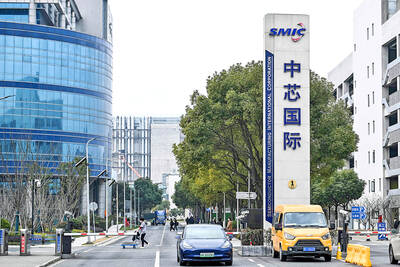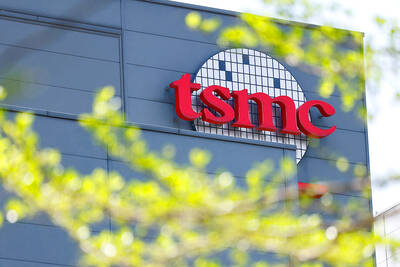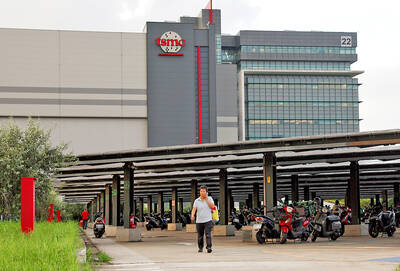When Maureen Nyce, the new chief of the Haisla First Nation, donned a hard hat and safety vest for a visit to the site of the Cedar Liquefied Natural Gas (LNG) pipeline last month, she did so not as a visiting dignitary or cultural emissary, but as an owner. The Haisla — who have occupied territory on Canada’s northwest coast for 9,000 years — own a 50.1 percent equity stake in the US$4 billion Cedar LNG export project near the town of Kitimat, British Columbia. Calgary, Alberta-based Pembina Pipeline owns the remainder. The world’s first majority-indigenous-owned LNG project, expected to be operational in 2028, could drastically change the future of Nyce’s people and serves as a test case for Canada, which has just started exporting LNG to Asia and is trying to reduce export reliance on the US.
Getting Cedar LNG from the idea stage to reality was dependent on a number of unique factors. The project benefited from strategic use of existing infrastructure, near-unanimous community support, and a massive, first-of-its-kind loan — a combination that could be difficult to replicate as Canada, the world’s fifth-largest natural gas producer, seeks to strike a balance between indigenous rights and economic growth.
In Canada, energy partnerships with indigenous groups are normally initiated by industry, but Cedar LNG was indigenous-led from the beginning. One crucial component was a 2018 deal that gave the Haisla access to 11 million cubic meters per day of capacity on the 670km Coastal GasLink pipeline that brings natural gas to the larger Shell-led LNG Canada facility, which also sits on Haisla land. To secure Haisla support for the project, Shell and other LNG Canada proponents started consultations with the First Nation in 2013.

Photo: REUTERS
While some in the community had concerns, especially around environmental impacts, many Haisla felt the industry’s growth was inevitable.
“It was viewed by our people as, ‘we can either jump on board, or we can get off and leave it and get left behind,’” Nyce said.
Leadership saw a rare opportunity to invest in the future, in a community where many live below the poverty line.
The Haisla negotiated direct financial payments from LNG Canada, but Dave LaVallie, the Nation’s business development officer at the time, urged the council to push for access to Coastal GasLink shipping capacity.
The Haisla were then able to search for a private-sector partner to help build their own LNG facility. Pembina Pipeline was looking for opportunities after canceling its Jordan Cove LNG project in Oregon due to opposition from landowners, environmentalists and indigenous groups.
The Haisla had guaranteed pipeline access as well as community endorsement early on, said Stu Taylor, Pembina’s senior vice-president and corporate development officer.
“What boards want, what executive teams want, is that certainty,” Taylor said.
The Haisla initially chose a smaller developer, Taylor said, but Pembina bid on the project a second time after the Haisla realized they needed a larger company with more financial heft behind them. They signed a partnership agreement in 2021, Pembina’s first such equity deal with an indigenous community.
“We had all the normal concerns,” Taylor said. “Can they fund the project, what capabilities do they have, how are you going to manage the joint venture, does the community support it?”
Pembina’s original vision involved the Haisla owning a minority stake, but “the Haisla, right from the very start, had a vision of being the majority owner,” he said.
The Cedar LNG board consists of four Haisla directors and four from Pembina.
Partnering with indigenous communities, encouraged by Canadian Prime Minister Mark Carney, can help projects win regulatory approval.
In Canada, 73 percent of the 504 major resource and energy projects under way or proposed run through or are within a 20km radius of indigenous territories. In some cases, indigenous equity ownership has not deterred opposition and deals can still fall apart. Pipeline operator TC Energy TRP.TO in February terminated a highly publicized deal to sell a minority stake in its Canadian natural gas pipeline system to indigenous communities for C$1 billion (US$725.6 million), according to a securities filing.
About 230km north of the Cedar project, the Ksi Lisims LNG project, proposed by Houston-based Western LNG and a consortium of Canadian natural gas producers, faces community pushback.
The Nisga’a Nation has purchased an equity stake in the pipeline being built to supply Ksi Lisims and supports the project, but it is opposed by other indigenous groups, including the Gitanyow Hereditary Chiefs, who last year blockaded service roads to protest the pipeline’s construction through their traditional territory and fear an impact on local salmon. The federal government approved Ksi Lisims on Monday, but the Gitanyow say they will continue to fight the project.
Tara Marsden, sustainability director for the Gitanyow Hereditary Chiefs, worries industry proponents are using indigenous partnerships to give their projects the perception of widespread social license.
“[LNG] is not unanimously supported, and it is a divisive issue for many people,” Marsden said.
The Haisla worked closely with Pembina’s finance team to secure funding. Sixty percent of the project would be funded by a construction term loan with a syndicate of banks, while 40 percent would be financed through equity contributions from both partners. The Haisla ultimately borrowed C$1.4 billion from the First Nations Finance Authority, a non-profit corporation owned and controlled by First Nation governments, to fund their share, Nyce said.
In a ratification vote last year, nearly 93 percent of Haisla members voted in favor of borrowing money for the project. Nyce declined to put a dollar value on the revenues the Haisla expect from Cedar LNG. She said it would be at least a decade until significant revenues flow to the community rather than paying off debt.
Even so, she and other council members are putting plans in place — for housing, for education and training programs, for health and social supports for community members.
“This is our territory. When this project is gone, we’ll still be here,” Nyce said.

NO BREAKTHROUGH? More substantial ‘deliverables,’ such as tariff reductions, would likely be saved for a meeting between Trump and Xi later this year, a trade expert said China launched two probes targeting the US semiconductor sector on Saturday ahead of talks between the two nations in Spain this week on trade, national security and the ownership of social media platform TikTok. China’s Ministry of Commerce announced an anti-dumping investigation into certain analog integrated circuits (ICs) imported from the US. The investigation is to target some commodity interface ICs and gate driver ICs, which are commonly made by US companies such as Texas Instruments Inc and ON Semiconductor Corp. The ministry also announced an anti-discrimination probe into US measures against China’s chip sector. US measures such as export curbs and tariffs

The US on Friday penalized two Chinese firms that acquired US chipmaking equipment for China’s top chipmaker, Semiconductor Manufacturing International Corp (SMIC, 中芯國際), including them among 32 entities that were added to the US Department of Commerce’s restricted trade list, a US government posting showed. Twenty-three of the 32 are in China. GMC Semiconductor Technology (Wuxi) Co (吉姆西半導體科技) and Jicun Semiconductor Technology (Shanghai) Co (吉存半導體科技) were placed on the list, formally known as the Entity List, for acquiring equipment for SMIC Northern Integrated Circuit Manufacturing (Beijing) Corp (中芯北方積體電路) and Semiconductor Manufacturing International (Beijing) Corp (中芯北京), the US Federal Register posting said. The

TECH TITAN: Pandemic-era demand for semiconductors turbocharged the nation’s GDP per capita to surpass South Korea’s, but it still remains half that of Singapore Taiwan is set to surpass South Korea this year in terms of wealth for the first time in more than two decades, marking a shift in Asia’s economic ranks made possible by the ascent of Taiwan Semiconductor Manufacturing Co (TSMC, 台積電). According to the latest forecasts released on Thursday by the central bank, Taiwan’s GDP is expected to expand 4.55 percent this year, a further upward revision from the 4.45 percent estimate made by the statistics bureau last month. The growth trajectory puts Taiwan on track to exceed South Korea’s GDP per capita — a key measure of living standards — a

READY TO HELP: Should TSMC require assistance, the government would fully cooperate in helping to speed up the establishment of the Chiayi plant, an official said Taiwan Semiconductor Manufacturing Co (TSMC, 台積電) yesterday said its investment plans in Taiwan are “unchanged” amid speculation that the chipmaker might have suspended construction work on its second chip packaging plant in Chiayi County and plans to move equipment arranged for the plant to the US. The Chinese-language Economic Daily News reported earlier yesterday that TSMC had halted the construction of the chip packaging plant, which was scheduled to be completed next year and begin mass production in 2028. TSMC did not directly address whether construction of the plant had halted, but said its investment plans in Taiwan remain “unchanged.” The chipmaker started